![[WEBSITE] Text Slides.jpg](https://images.squarespace-cdn.com/content/v1/5e92f865fd7a75746164346c/7beb4977-c31d-4cbd-a6fb-b7cf7d90d512/%5BWEBSITE%5D+Text+Slides.jpg)
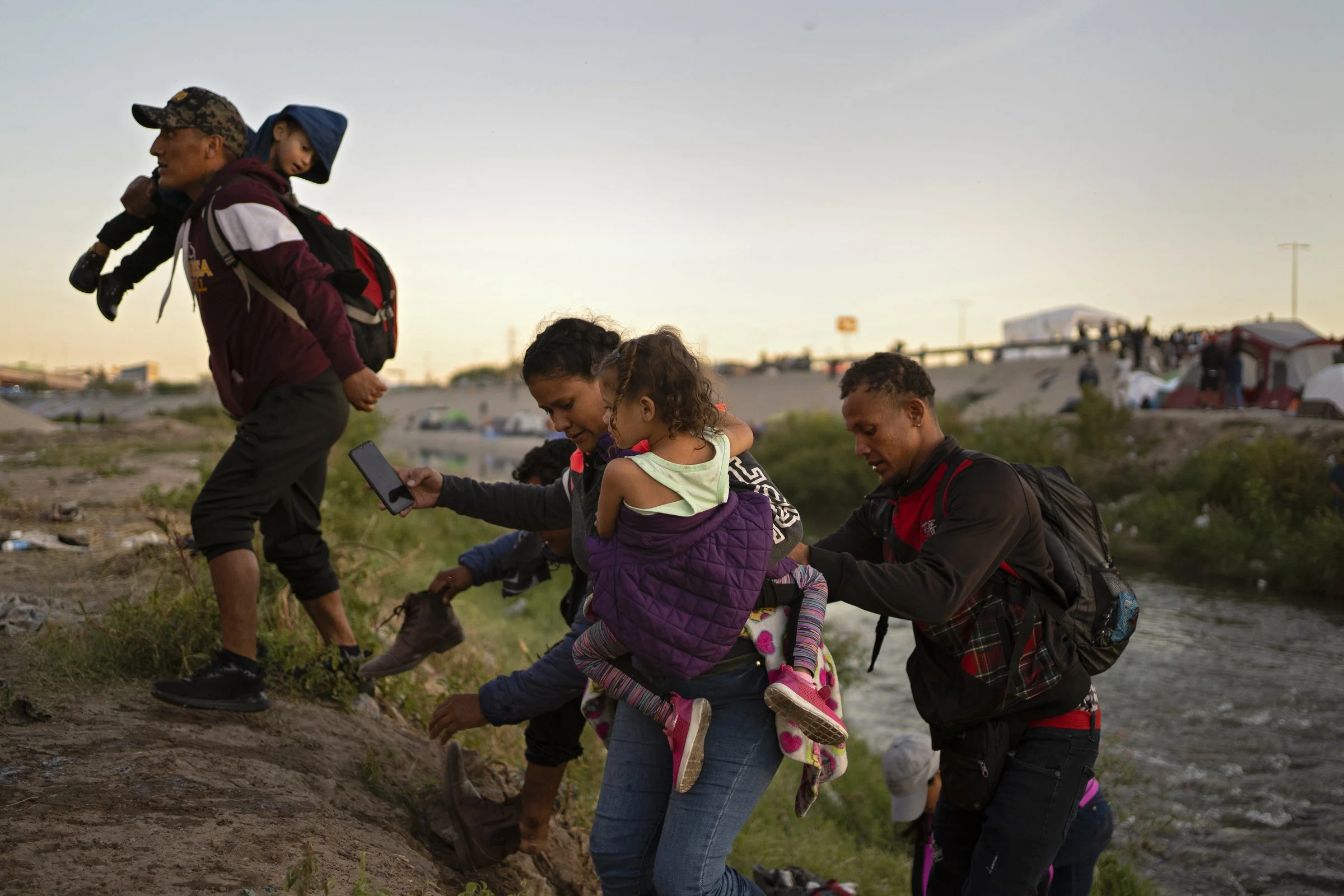
“The number of migrants in the city has never decreased. There’s always a constant flow of migrants,” said priest Francisco Garcia Salinas, who opened the doors of San Juan Apóstol in 2018 to migrant women traveling while pregnant and/or with children. Here, people cross the Rio Grande between Ciudad Juárez and El Paso hoping to receive asylum in the United States on October 29, 2022.
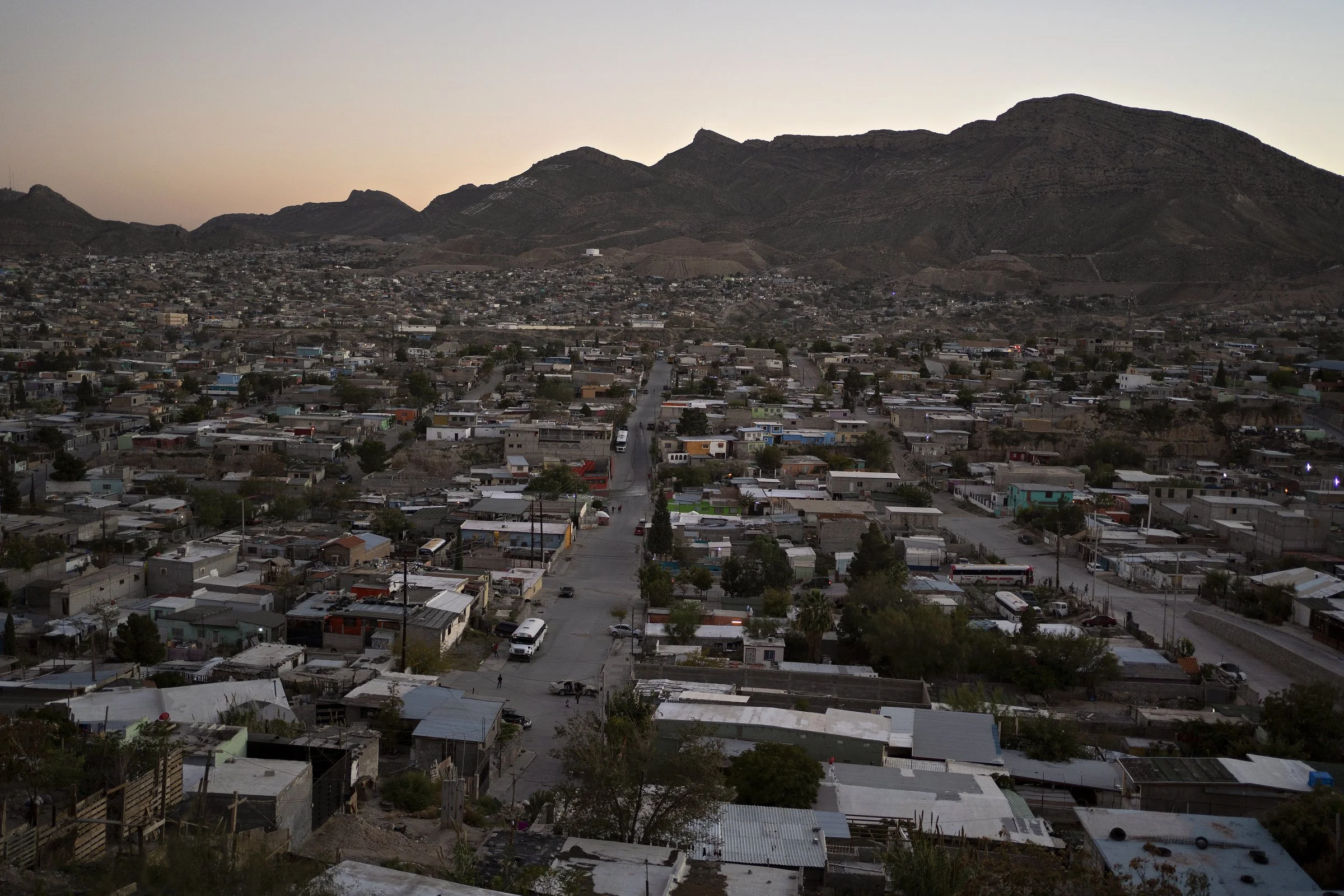
“We said we have to work with a dual-eligible population—and not because not everyone is vulnerable. But, there’s another layer of vulnerability. And in this case, that’s women and children,” said Patricia Galarza Gandara, a psychologist and shelter coordinator. The only shelter in Juárez catering specifically to this demographic, the San Juan Apóstol shelter offers women lodging, food, educational classes, psychosocial support, and access to medical care. Here, on October 29, 2022, an image of a neighborhood in Ciudad Juárez.
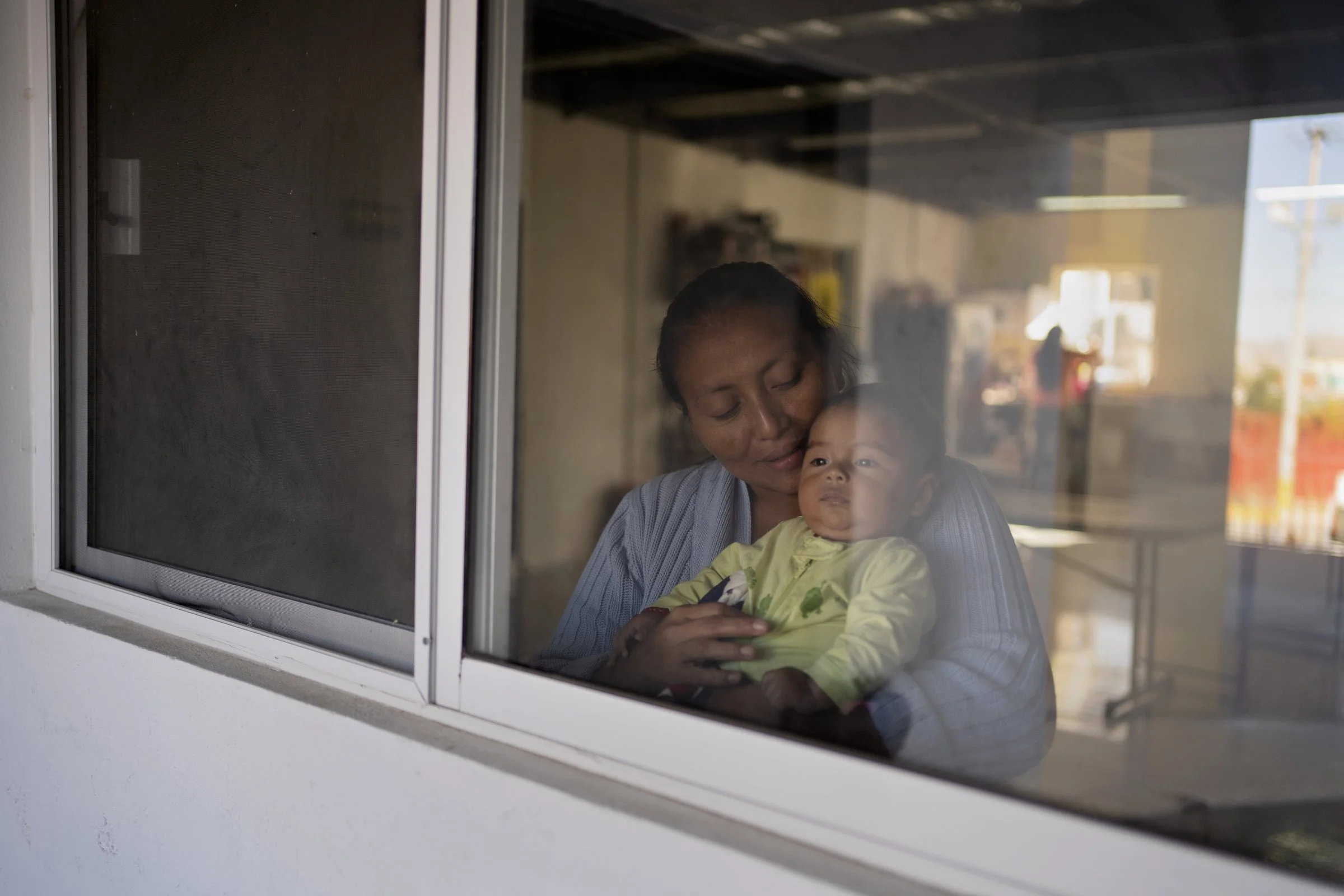
Though nearly eight months pregnant, Reiyna Munguia fled Honduras due to gang threats. Despite several migration challenges, including an attempted kidnapping, and as she approached her due date, Munguia and her daughter finally found refuge in southern Mexico where she gave birth. “I felt so much pain in my belly. I felt like my baby was going to fall out.” Here, Munguia holds her son at the San Juan Apóstol shelter in Ciudad Juárez on October 28, 2022.

One month after giving birth, Reiyna Munguia and her children headed north toward Ciudad Juárez, crossed the border through a sewage tunnel, and were detained by U.S. CBP officers. “My son was dripping in poop for five hours, they didn’t give me diapers. With a really high fever, my daughter cried and cried. I couldn’t stand it.” Here, Munguia holds her son while talking to her daughter at the San Juan Apóstol shelter on October 29, 2022.
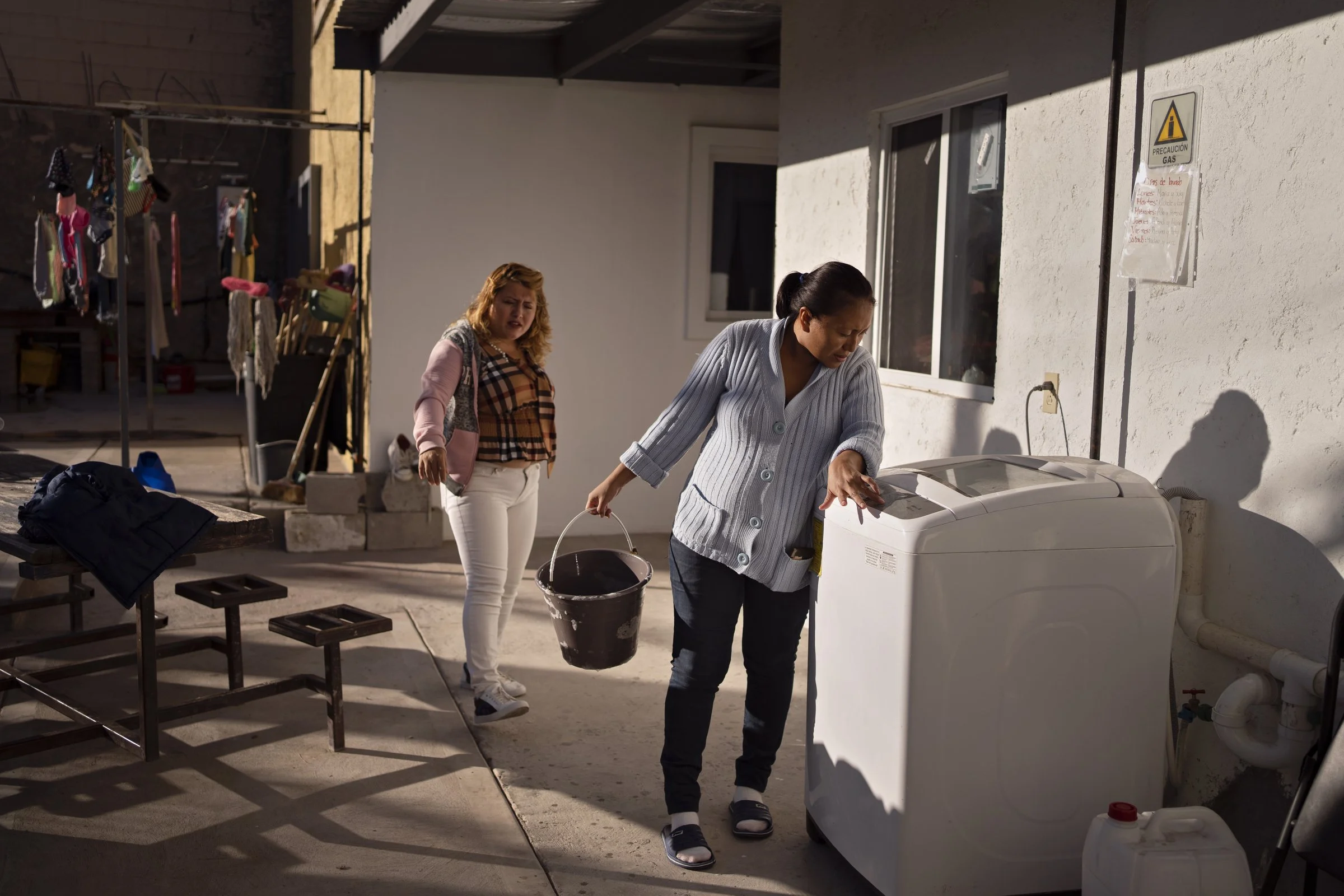
After a few days in detention, they were returned back to Mexico. While she waits to enter the U.S. documented with the help of San Juan Apóstol shelter, she says she’s happy to have a place to sleep, three meals a day, and access to medical care. Here, Reiyna Mungia fills the washing machine with water at the shelter on October 28, 2022.
![“[In the United States] I’m going to work hard, legally, to take care of my kids," said Reiyna Mungia. Here, Mungia’s daughter looks at a phone at the shelter on October 28, 2022.](https://images.squarespace-cdn.com/content/v1/5e92f865fd7a75746164346c/9b0a058e-ca9f-4fc0-93c7-bf41ea8fc58a/D.VILLASANA_MATERNAL_HEALTH_MIGRANTS_04.JPG)
“[In the United States] I’m going to work hard, legally, to take care of my kids," said Reiyna Mungia. Here, Mungia’s daughter looks at a phone at the shelter on October 28, 2022.
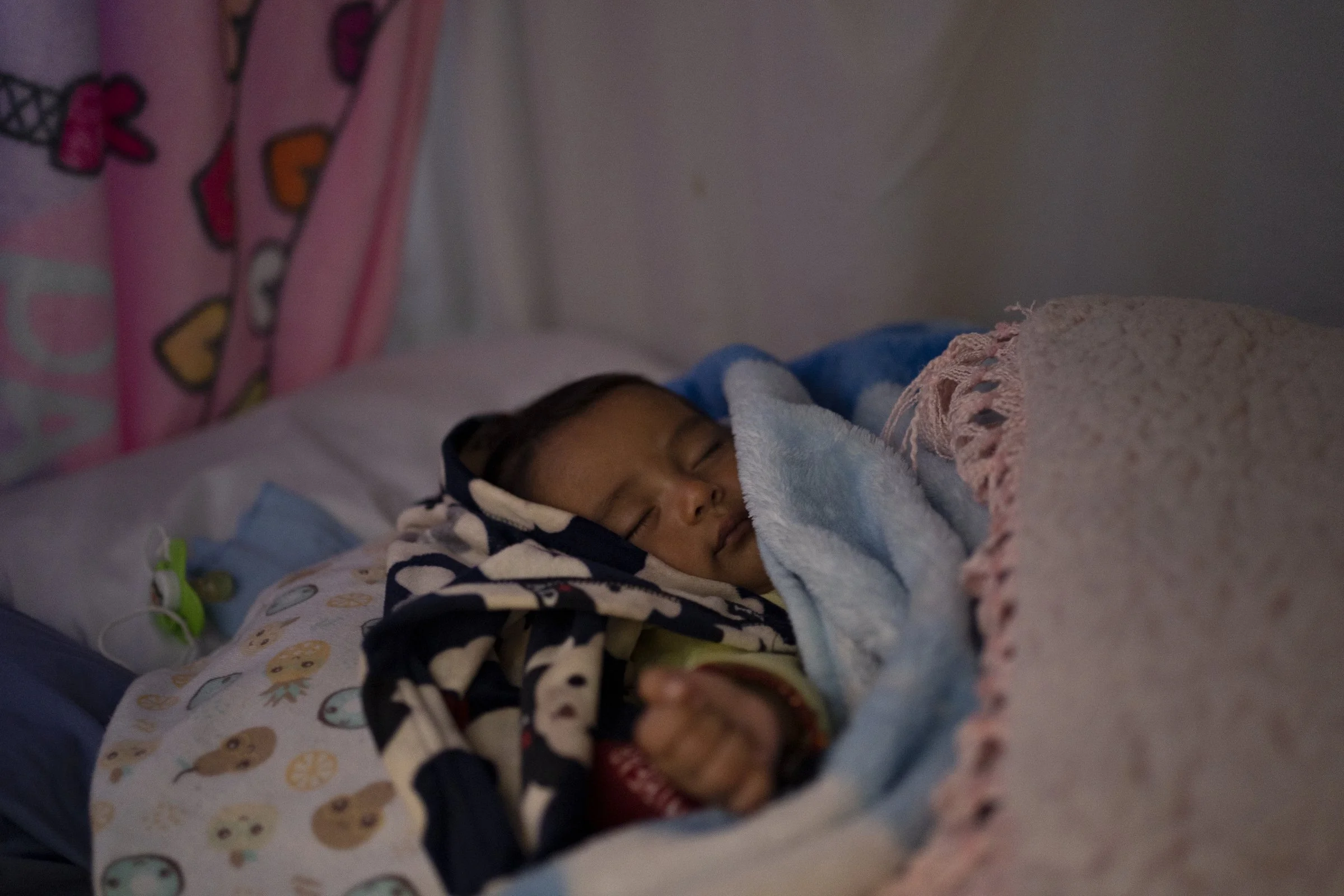
On October 28, 2022, Reiyna Mungia's son Dilan sleeps on their bunkbed in the shelter.
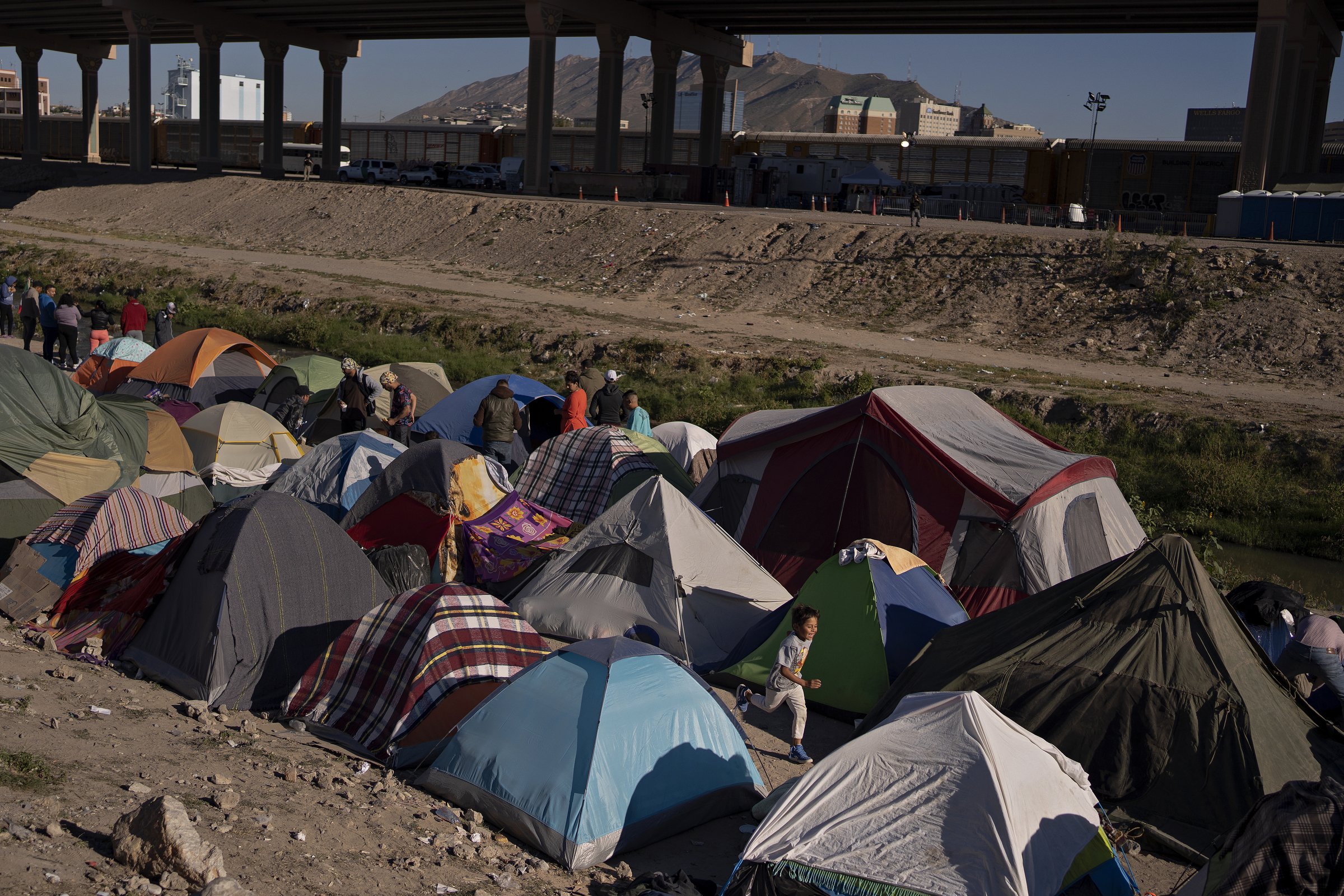
On October 29, 2022, a young boy runs through tents along the Rio Grande between Ciudad Juárez and El Paso where migrants mostly from Venezuela set up camp. In late November 2022, Mexican authorities forcibly evacuated migrants from this settlement, erupting in violence and fires.
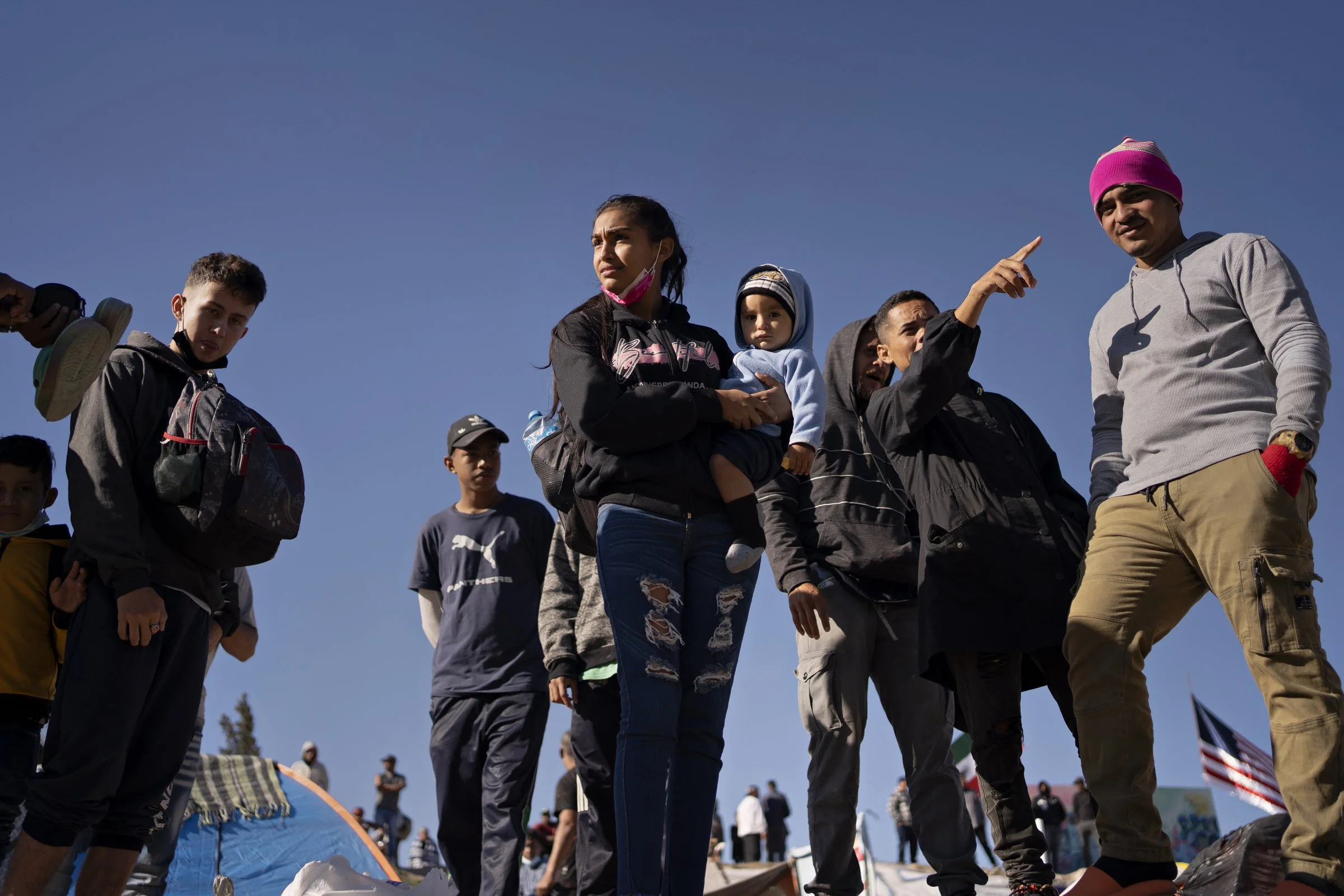
A family stands on the banks of the Rio Grande and talks with other migrants before crossing on October 29, 2022. Traveling from Venezuela with children—the youngest of whom was nine months old—they said they heard U.S. Customs and Border Protection officials were letting people with kids pass. Having just arrived to Juárez after a “traumatic” journey that they “didn’t wish on anyone” where they saw dead bodies of people who had choked in the rivers of the Darién Gap, they quickly crossed the Rio Grande to turn themselves in with the hopes of a new life in the United States.
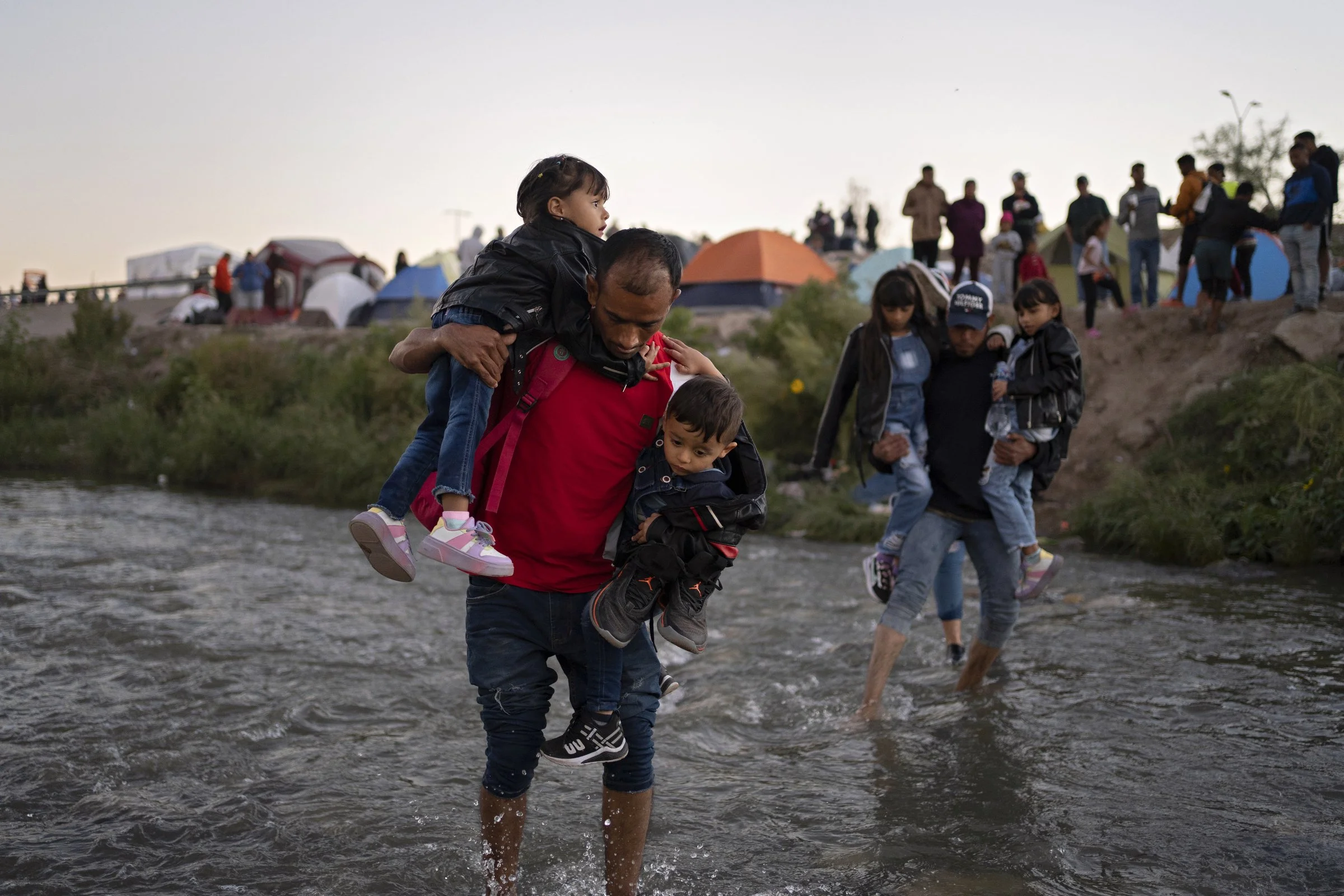
On October 29, 2022, people cross the Rio Grande between Ciudad Juárez and El Paso where they’ll turn themselves in to U.S. Customs and Border Protection officials. This past fiscal year has been the deadliest for migrants attempting to cross into the U.S. where many hope to be granted asylum. However, since Title 42, a public health policy first used as a way to curb the spread of COVID-19 in the U.S. by the Trump administration, more than 2 million migrants have been expelled from the country.

A migrant helps a family with a young boy cross the Rio Grande between Ciudad Juárez and the United States on October 29, 2022. Despite Title 42 being controversial as well as a threat to international refugee and human rights law, the order was continued and expanded under the Biden administration before being challenged by the American Civil Liberties Union.
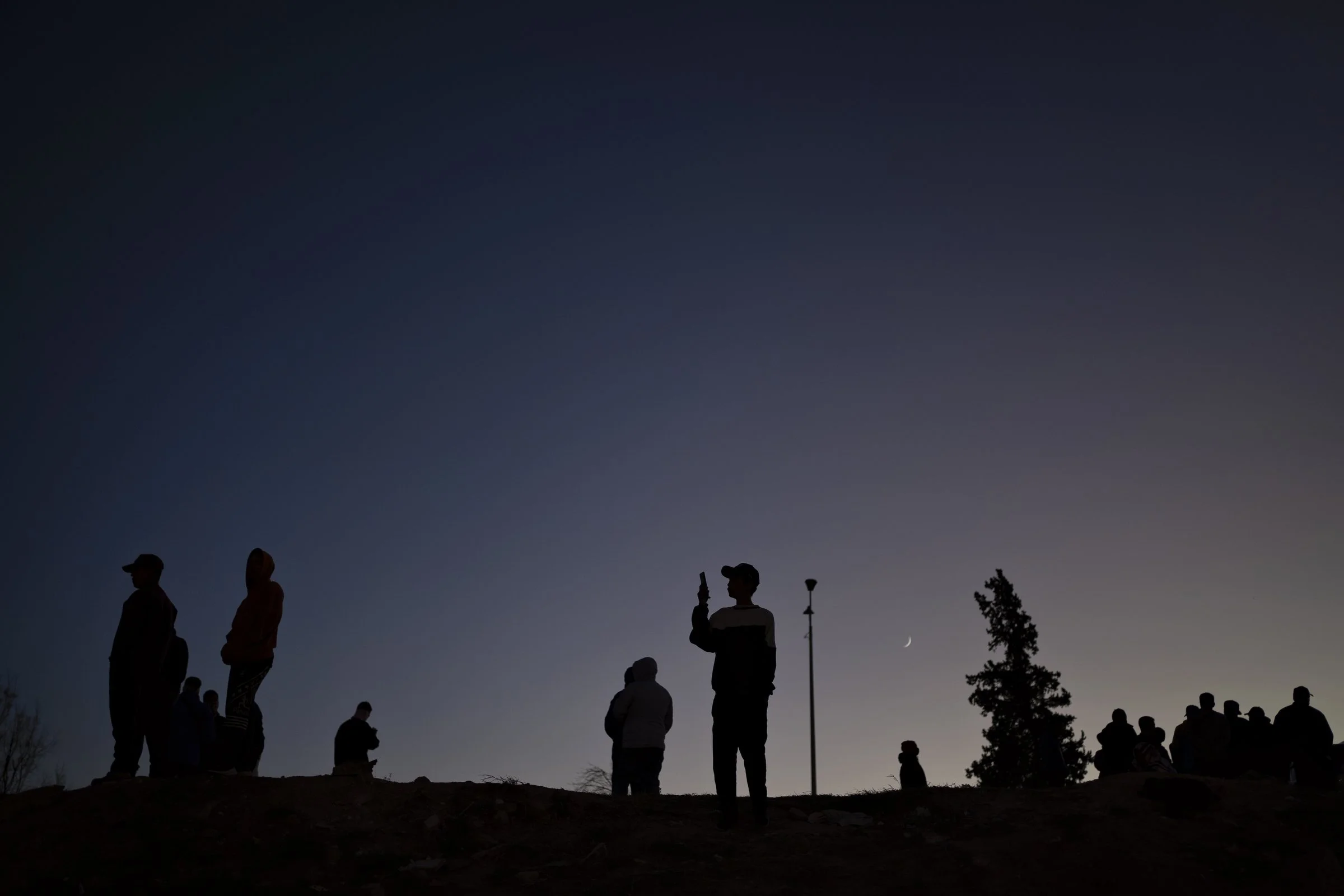
Migrants gather along the border on October 28, 2022, between Ciudad Juárez and El Paso. Though Title 42 was set to end a few days before Christmas in 2022 after being struck down by a federal court, the Supreme Court allowed the policy to remain temporarily effective in response to a Republican-backed appeal challenging the order. While oral arguments will be heard by the high court in February with a decision deadline in June, migrant mothers, children, families, and others remain in limbo.
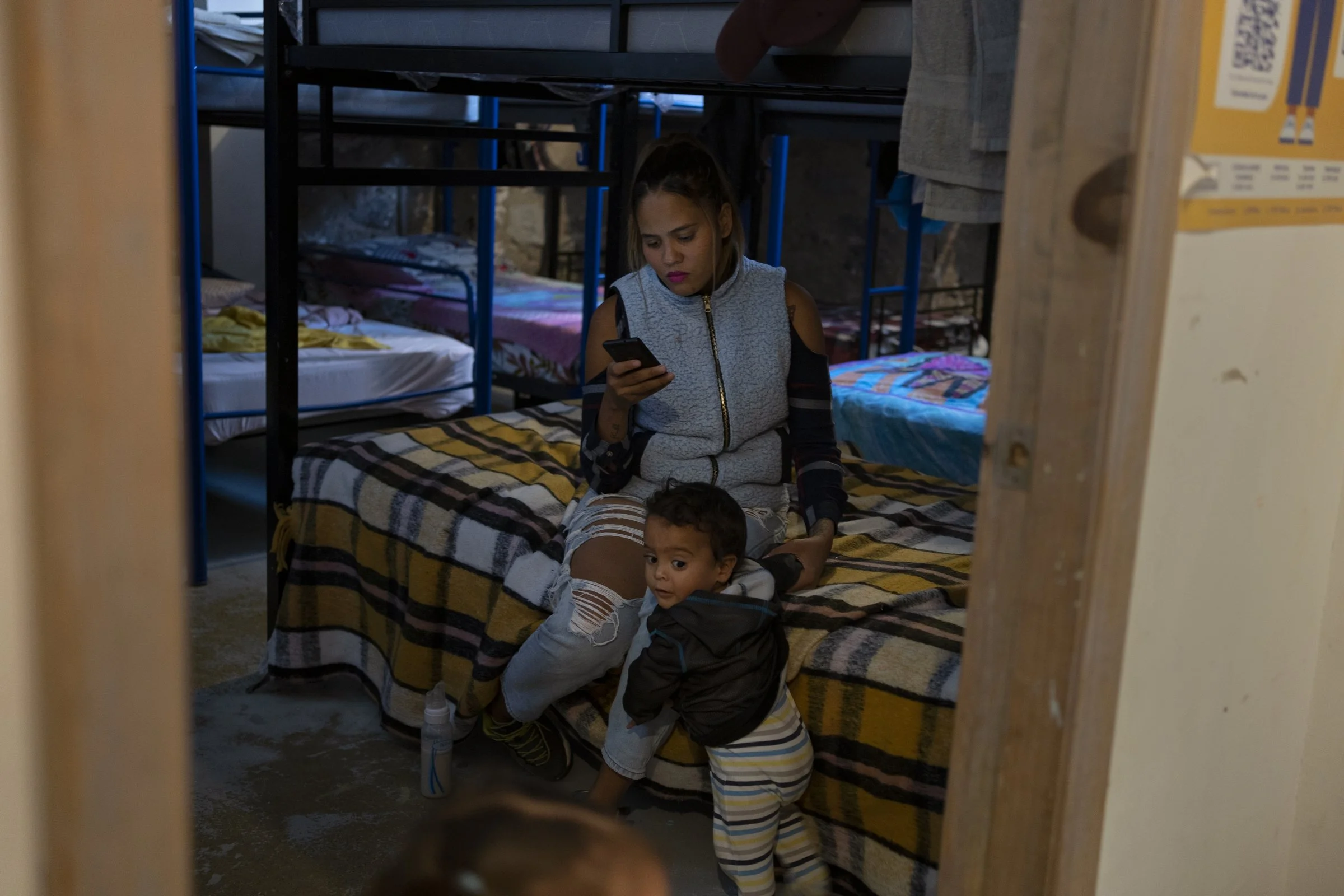
Noslen Diaz, her husband, and their 13-month-old son migrated through the Daríen Gap where they saw dead bodies. Despite the harrowing journey, they finally reached the U.S. border where they were detained and separated. In detention, her son Aldahir lost weight because of the barely-edible frozen food. And, when breastfeeding, a U.S. CBP official yelled at her. “She asked me why I was a pig and why I was taking my breasts out like that. I went to a corner where she couldn’t see me and cried. It was horrible.” Here, on October 29, 2022, Diaz holds her son while she looks at her phone at the San Juan Apóstol shelter.
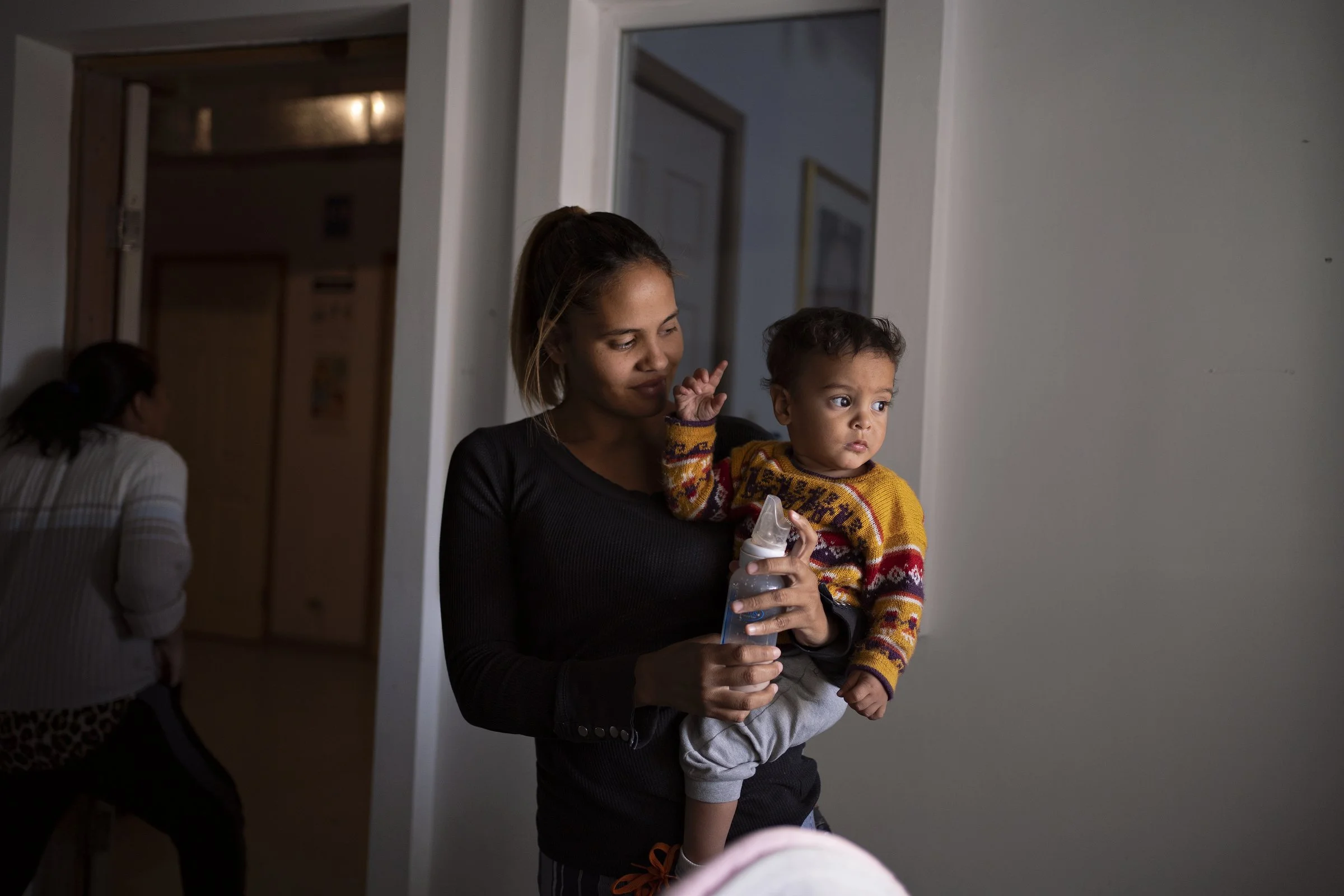
Although officers told her she was going to be freed, days later Noslen Diaz was returned to the streets of Juárez without her ID. “When we saw they were taking us back to where we were, we started to cry. From fear, shock, and uncertainty. We were being deported under [Title 42.]” Shielding herself from the rain, a passerby told her about the San Juan Apóstol shelter where after 22 days of anxiously waiting to hear from her husband, he called. “I feel at peace now,” she said. Here, on October 28, 2022, Diaz holds her son in the kitchen of the San Juan Apóstol shelter.
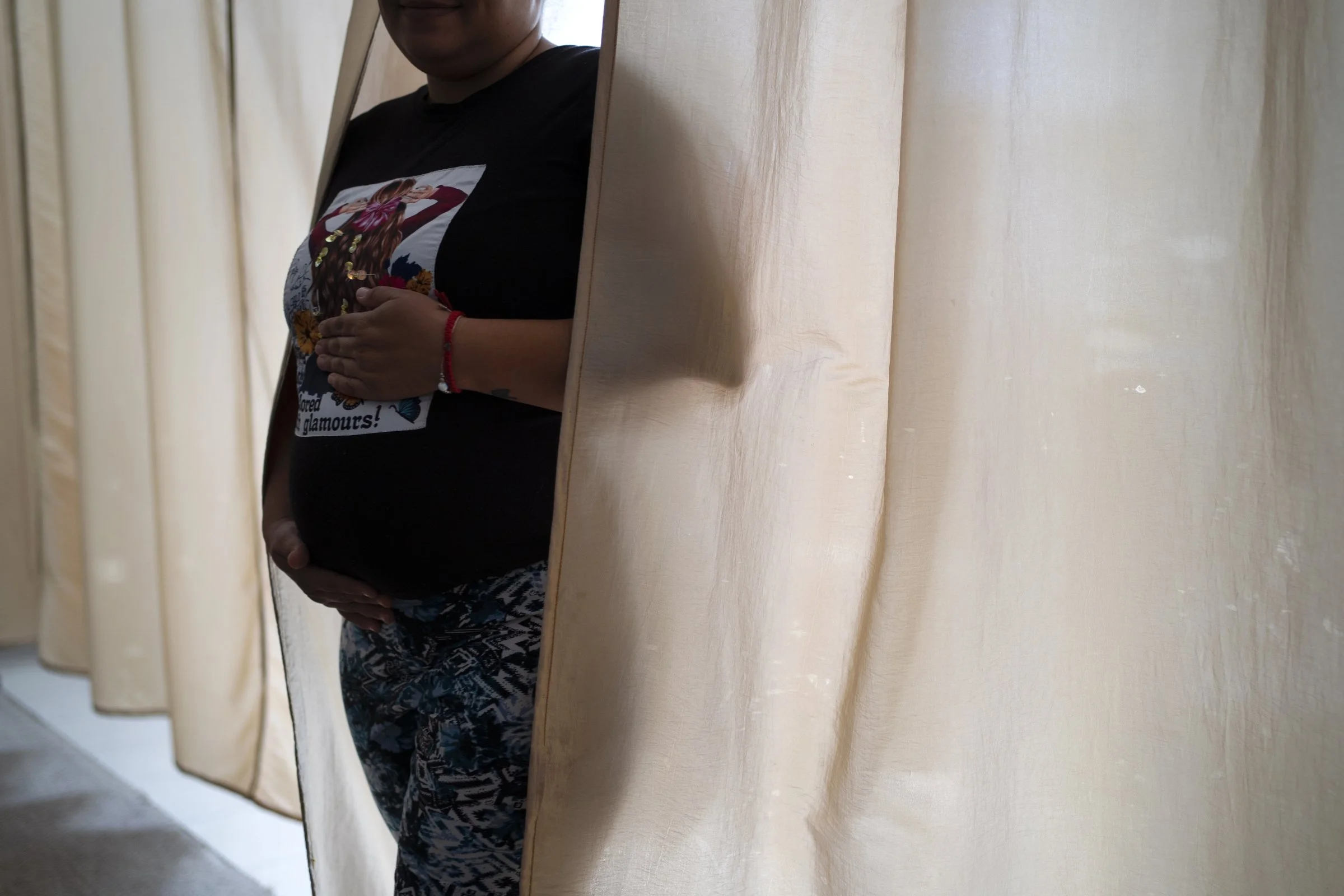
Despite being pregnant, when gang members threatened to kill and rape *Roberta Cruz's children, she fled Honduras with them, leaving her home and business behind. After riding in cramped trailers for hours, they arrived to Reynosa where they were kept in an abandoned apartment by a smuggler until it was clear to cross into the U.S. “I slept on a small mattress with the kids. The smells were horrible. There was a dog that defecated outside the apartment. We had to eat there, bathe there.” Sitting in the coyote’s small room, she realized she was pregnant. “My world fell apart." Here, on October 29, 2022, Cruz, now five months pregnant, poses for a portrait at the Buen Samaritano shelter where she currently lives with her two children and partner in Ciudad Juárez. *Roberta Cruz’s name has been changed to protect her identity.
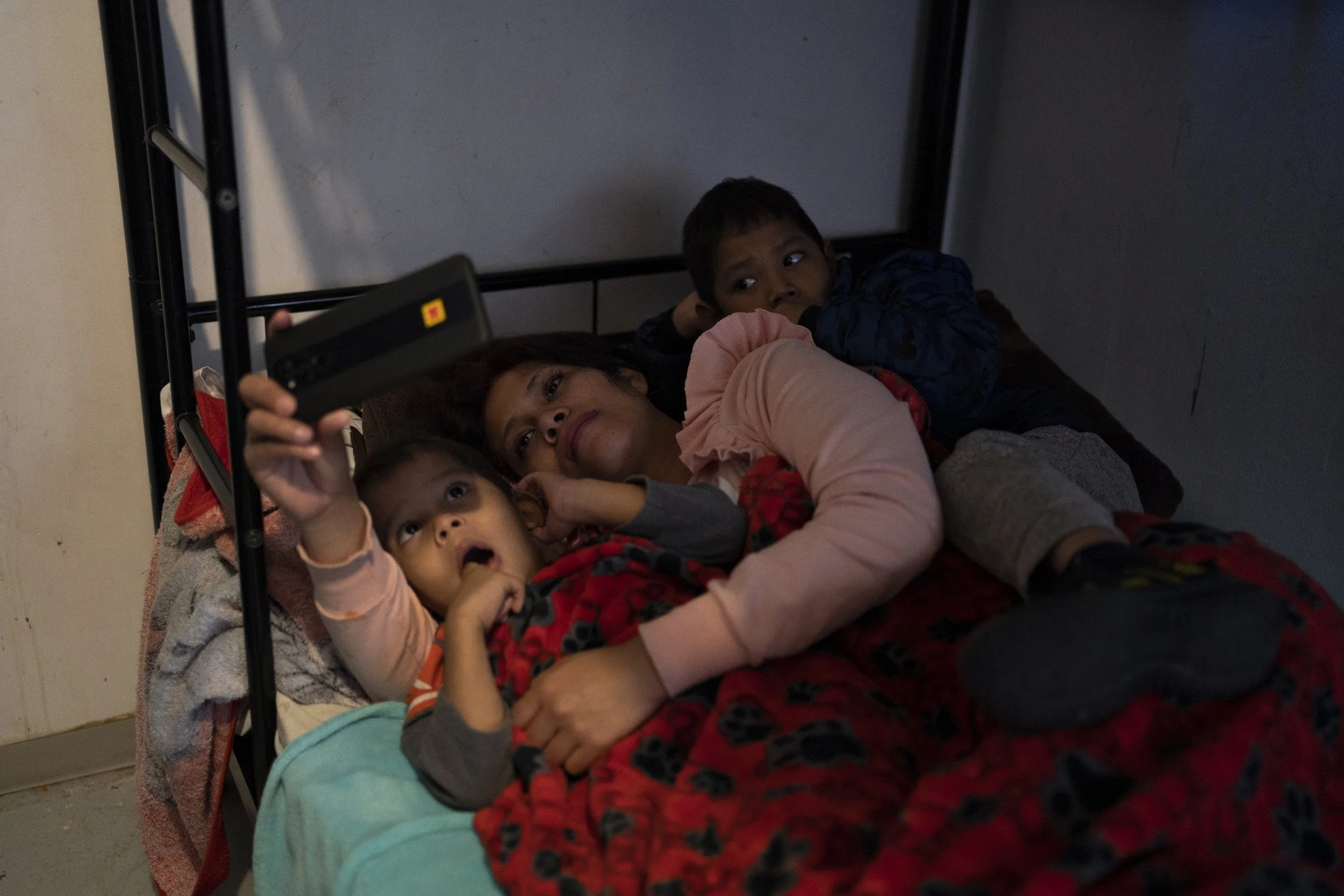
Traveling as a single mother with her two young boys, Ada Perez fled Central America to escape her stepfather who consistently beat up her and her brother. While trying to hold back tears, Perez recounted how he’d tie them with a rope, by the throat, and viciously punch her brother’s stomach. Because their biological mother didn’t work, he acted out violently because he had to support them—even though he’d often deny them food. Here, on October 28, 2022, Perez lays in bed with her two young boys at the San Juan Apóstol shelter in Ciudad Juárez.
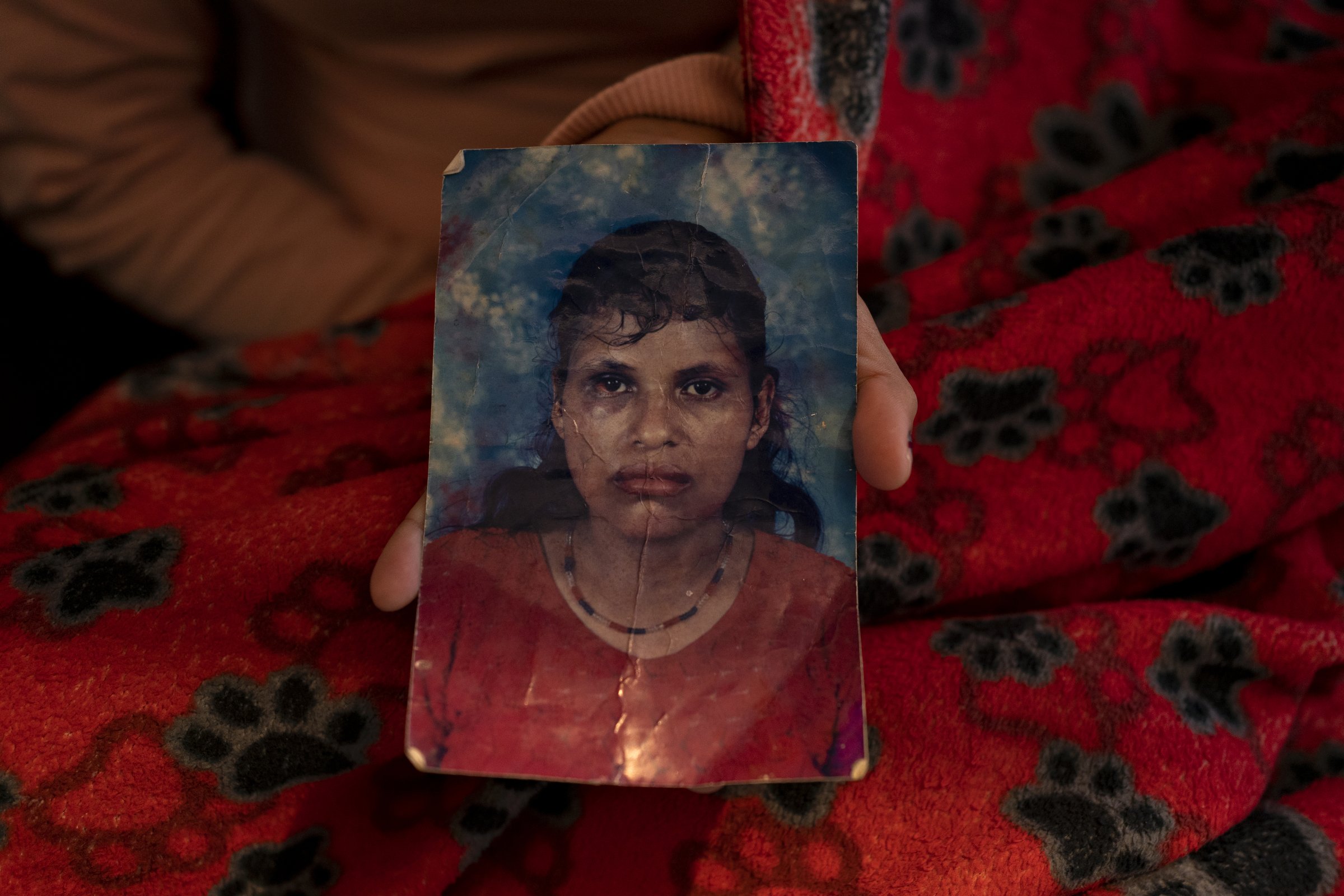
When showing this image of herself with a black eye on October 28, 2022, at the San Juan Apóstol shelter Ada Perez said, “That’s nothing.” After years of being brutally beaten up by her stepfather, Perez and her mother had the courage to report him to the police and he was jailed. But, set to be released soon, Perez, her two children, and mother had to flee in order to protect their safety since he had vowed to kill them as the police arrested him.
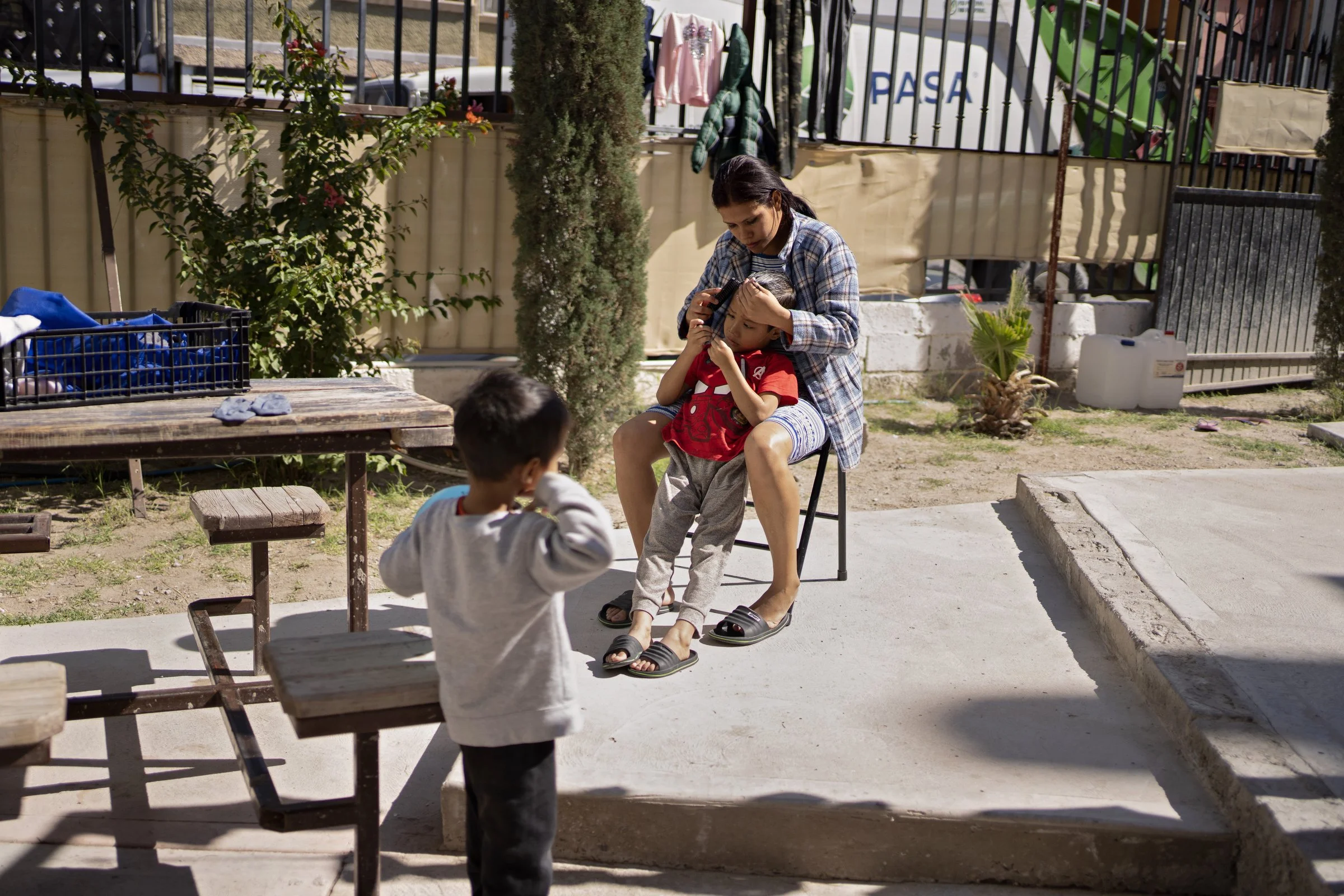
On October 29, 2022, at the San Juan Apóstol shelter in Ciudad Juárez, Ada Perez combs one of her son's head while the other watches.
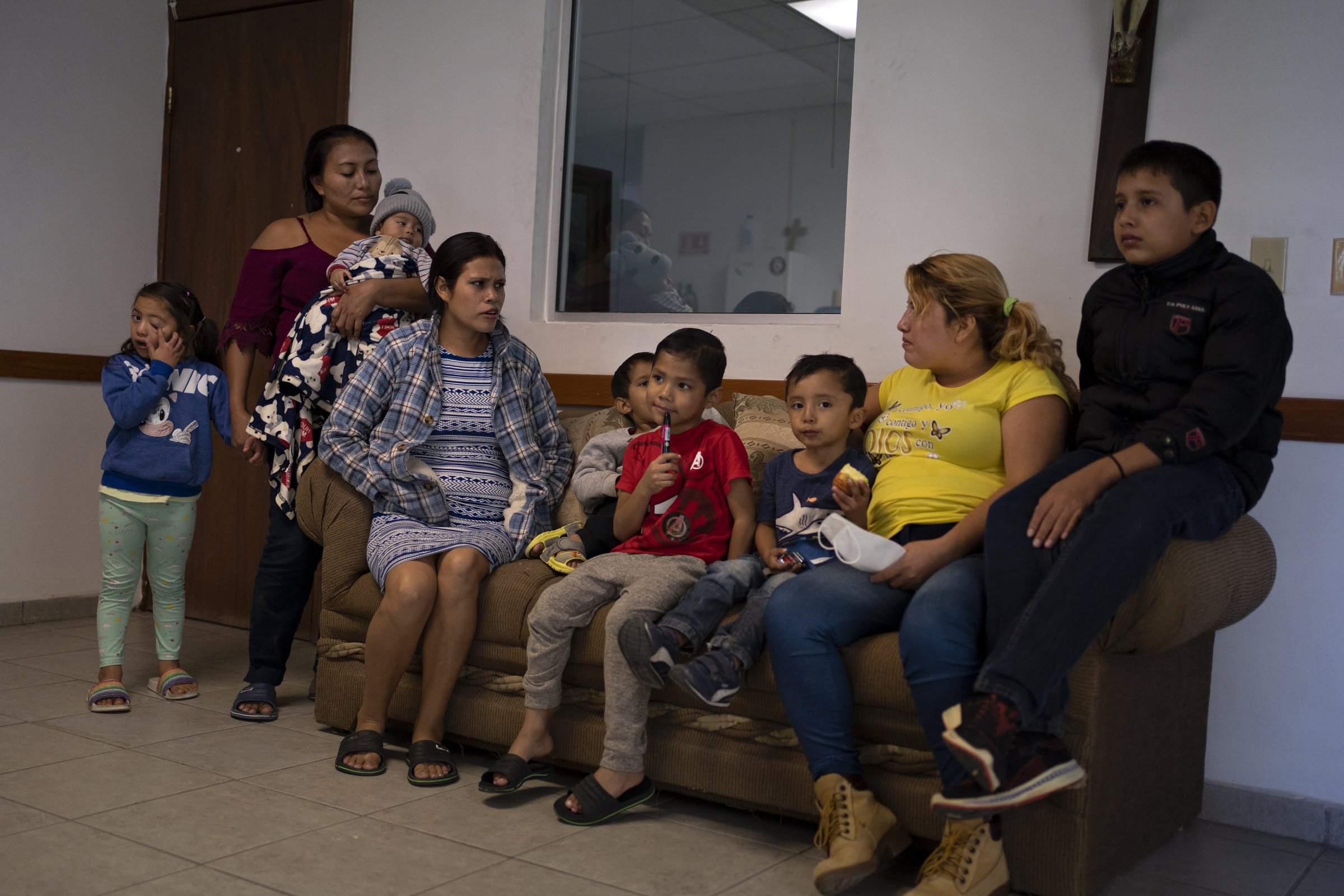
On October 29, 2022, Ada Perez, Reiyna Munguia, and their children, along with other migrants living at the San Juan Apóstol shelter, wait to see a volunteer dentist.
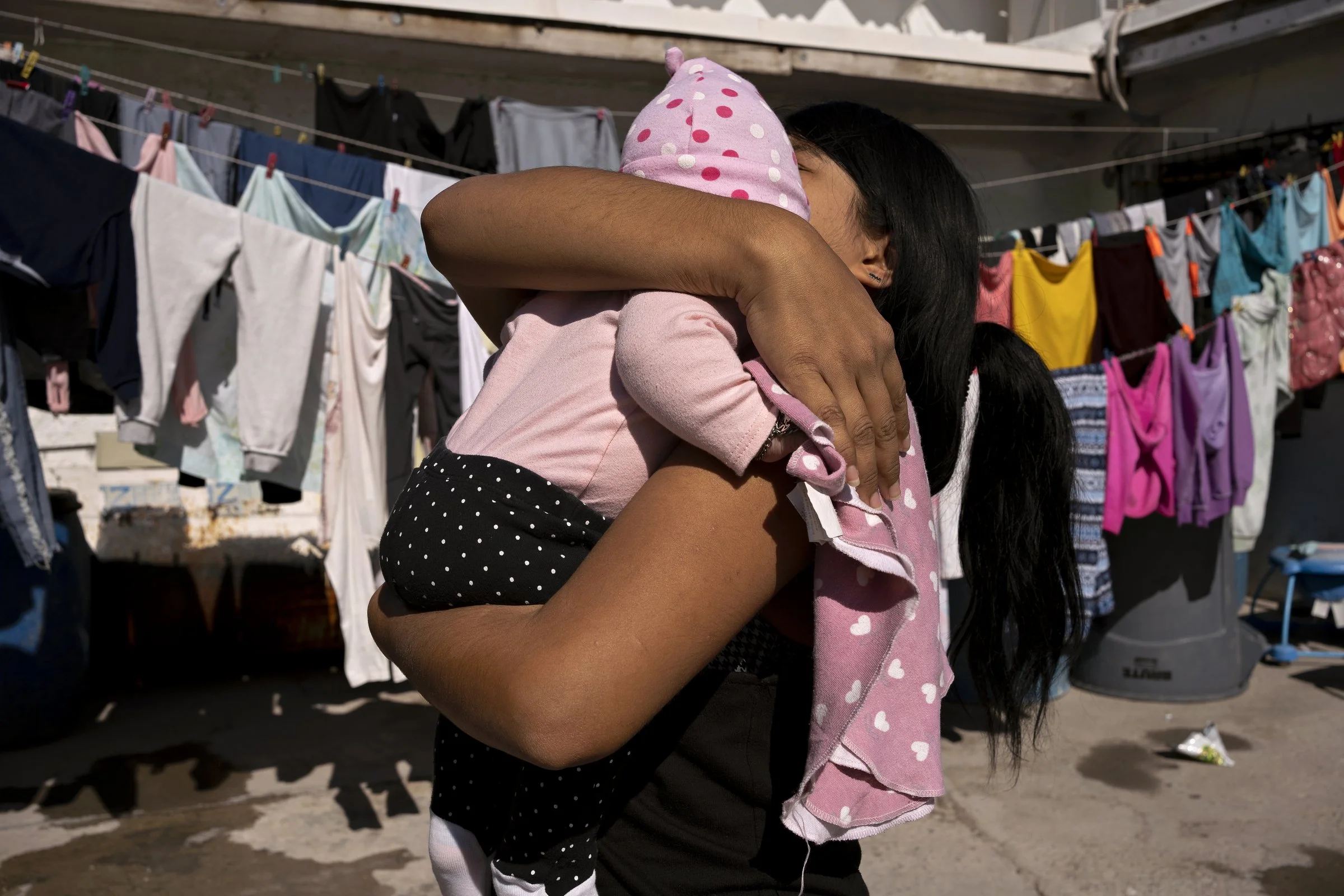
Thinking they were safe in Mexico, far from the MS-13 gang that forced *Rosa Maria Torres’ partner to work for them, they had to flee once again due to threats. But this time, she was eight months pregnant. “I did it for her," or, "Lo hice para ella," in Spanish. On October 29, 2022, *Torres holds her three-month-old daughter while posing for a portrait at the Buen Samaritano shelter where they currently live. *Rosa Maria Torres’ name has been changed to protect her identity.
![Despite having to pay multiple bribes throughout their journey and sleeping in the street, they made it to Mexicali where *Rosa Torres gave birth before continuing on to Ciudad Juárez. “It was really difficult [giving birth] because it’s not the same](https://images.squarespace-cdn.com/content/v1/5e92f865fd7a75746164346c/553fed36-6470-4bf7-a2c7-54fb4bb245e4/D.VILLASANA_MATERNAL_HEALTH_MIGRANTS_20.JPG)
Despite having to pay multiple bribes throughout their journey and sleeping in the street, they made it to Mexicali where *Rosa Torres gave birth before continuing on to Ciudad Juárez. “It was really difficult [giving birth] because it’s not the same as being at home, having your mom look out for you,” said Torres, who now lives at the Buen Samaritano shelter in Juárez while waiting to cross into the U.S. Here, On October 29, 2022, Torres ties her daughter's bracelet while laying on their bunk bed. *Rosa Maria Torres’ name has been changed to protect her identity.
![On October 30, 2022, families cross the Bridge of the Americas, including that of *Roberta Cruz, who now looks ahead to her new life in the U.S. “I want to work, to help my family, to [have] a future for my kids.” *Roberta Cruz’s name has been change](https://images.squarespace-cdn.com/content/v1/5e92f865fd7a75746164346c/4bf5294e-7a82-4587-9eec-88792ae9814c/D.VILLASANA_MATERNAL_HEALTH_MIGRANTS_21.JPG)
On October 30, 2022, families cross the Bridge of the Americas, including that of *Roberta Cruz, who now looks ahead to her new life in the U.S. “I want to work, to help my family, to [have] a future for my kids.” *Roberta Cruz’s name has been changed to protect her identity
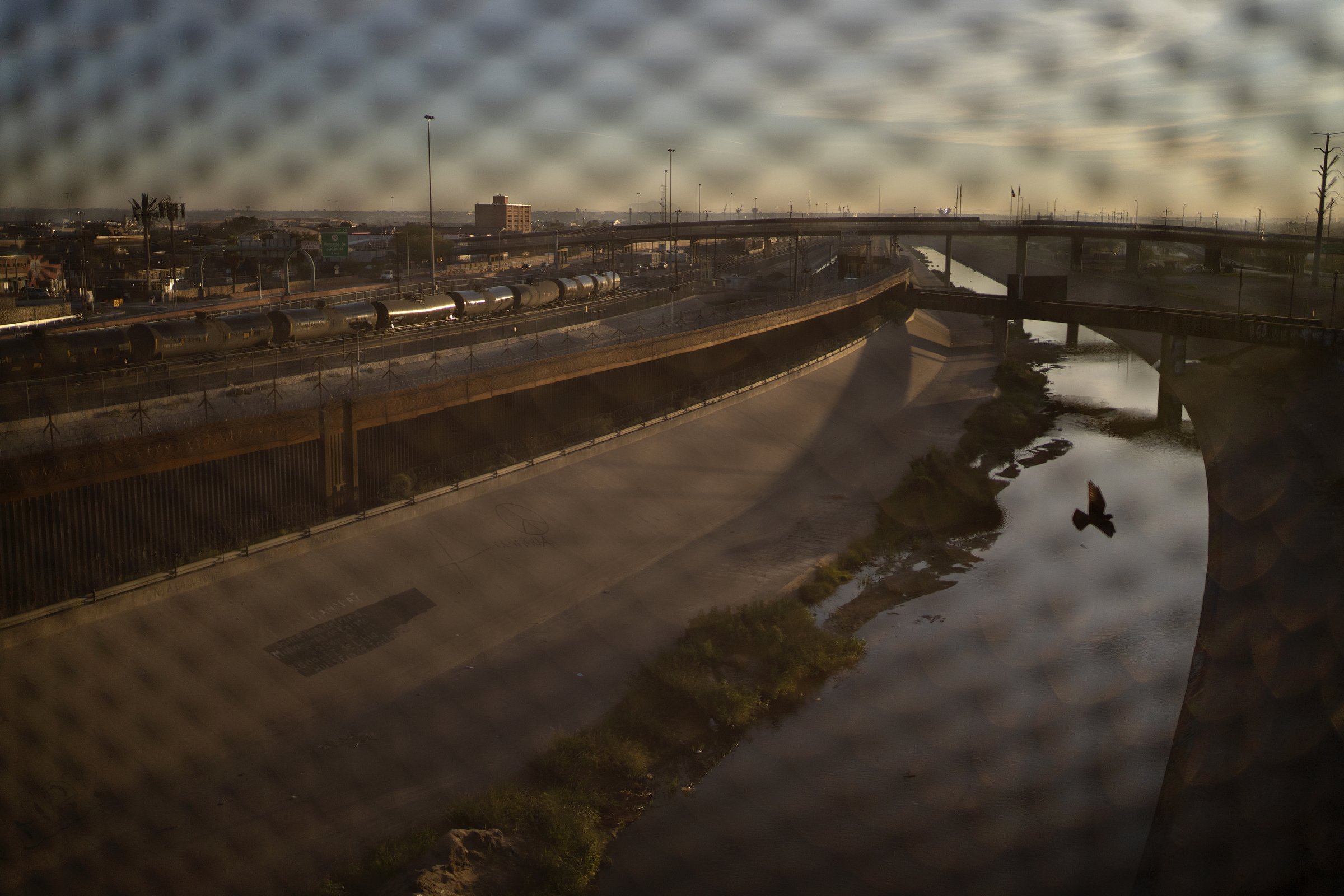
On October 30, 2022, a bird flies across the Rio Grande between Ciudad Juárez, Mexico, and El Paso, Texas.